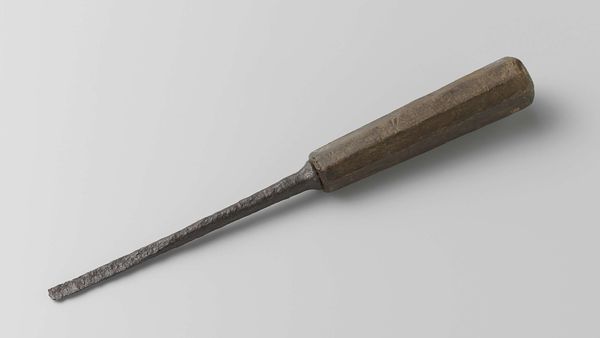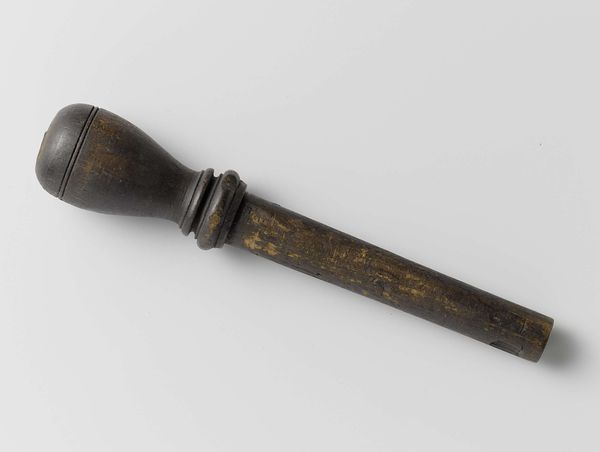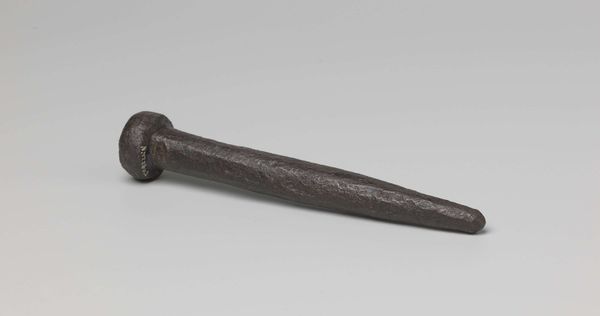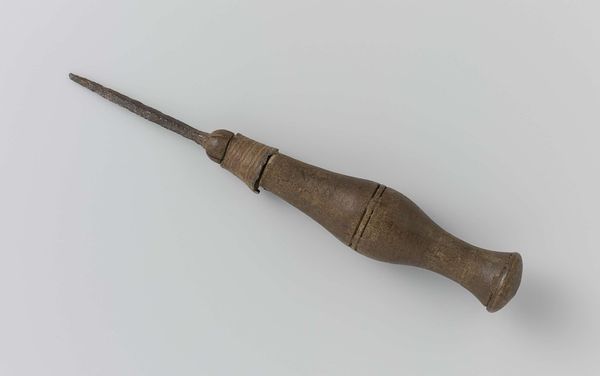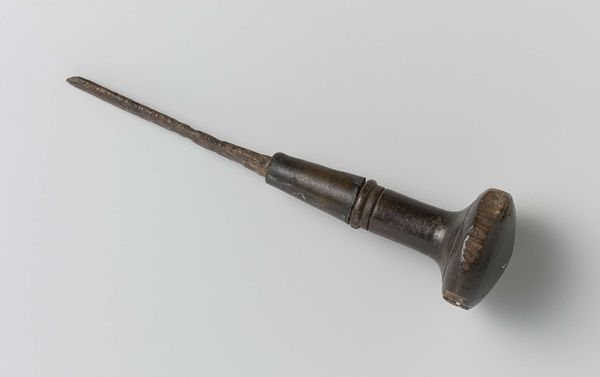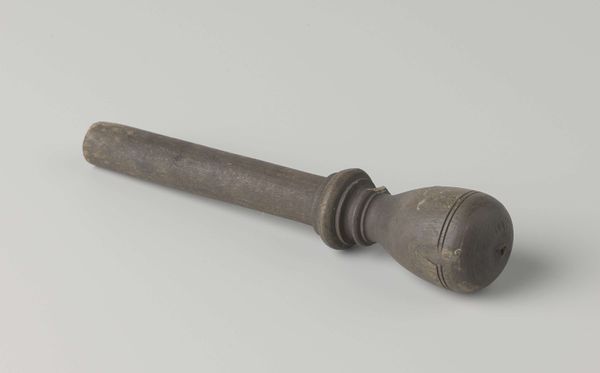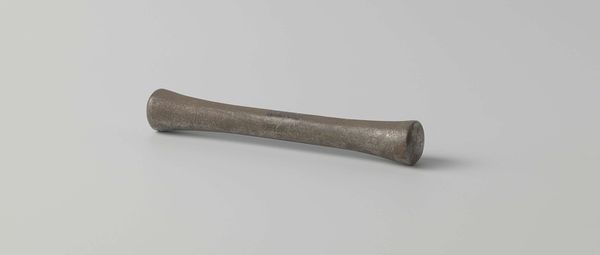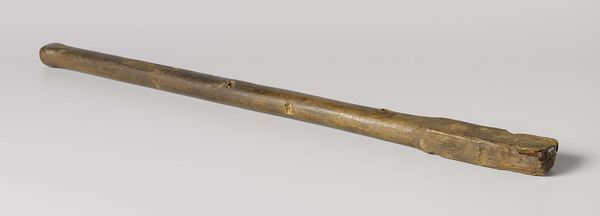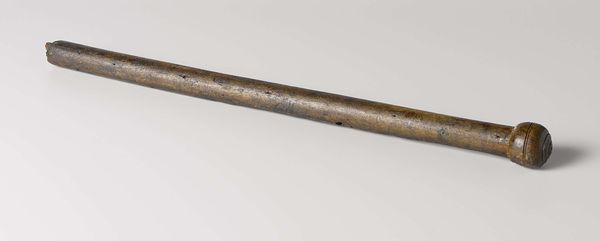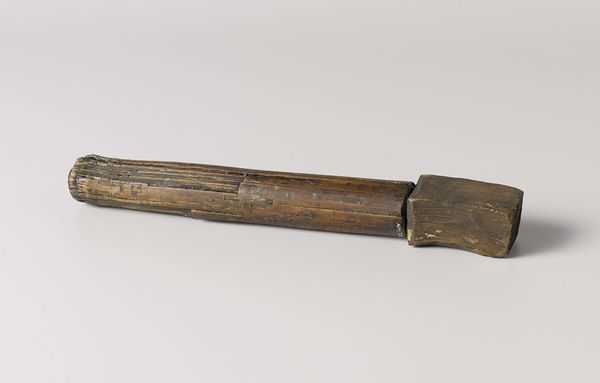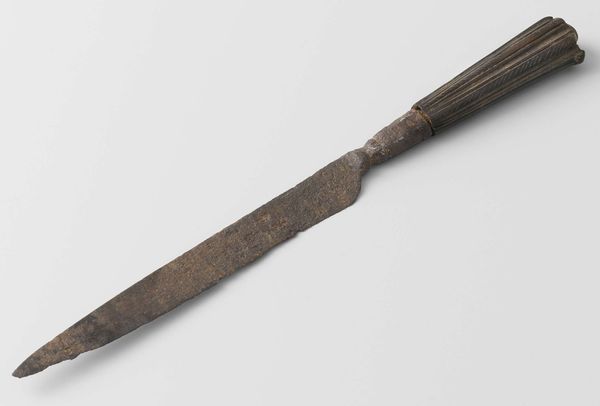
metal, sculpture, wood
#
medieval
#
metal
#
sculpture
#
wood
Dimensions: length 18.3 cm, diameter 3.3 cm, height 3 cm
Copyright: Rijks Museum: Open Domain
Here is a wood and metal Steekbeitel, or chisel, with a slanted edge and round handle. Tools like this one have been used for millennia. This tool is symbolic of human labor and skill. Consider how the chisel is like an extension of the hand, transforming raw materials into objects of utility and beauty. The act of carving itself resonates deeply; think of the sculptor breathing life into stone. We can see this impulse echoed in the marks left behind by the chisel, each cut a testament to the craftsman’s touch. Across cultures and time, the chisel appears in various forms. From ancient Egypt, where hieroglyphs were carved into stone, to medieval Europe, where artisans shaped wood for cathedrals, it persists as an essential instrument. Note how the very shape of the tool suggests directed force, an intentionality that aligns with our own desires to shape the world around us. Its ability to inscribe, to alter material, gives it a unique and enduring place in our cultural memory.
Comments
No comments
Be the first to comment and join the conversation on the ultimate creative platform.
